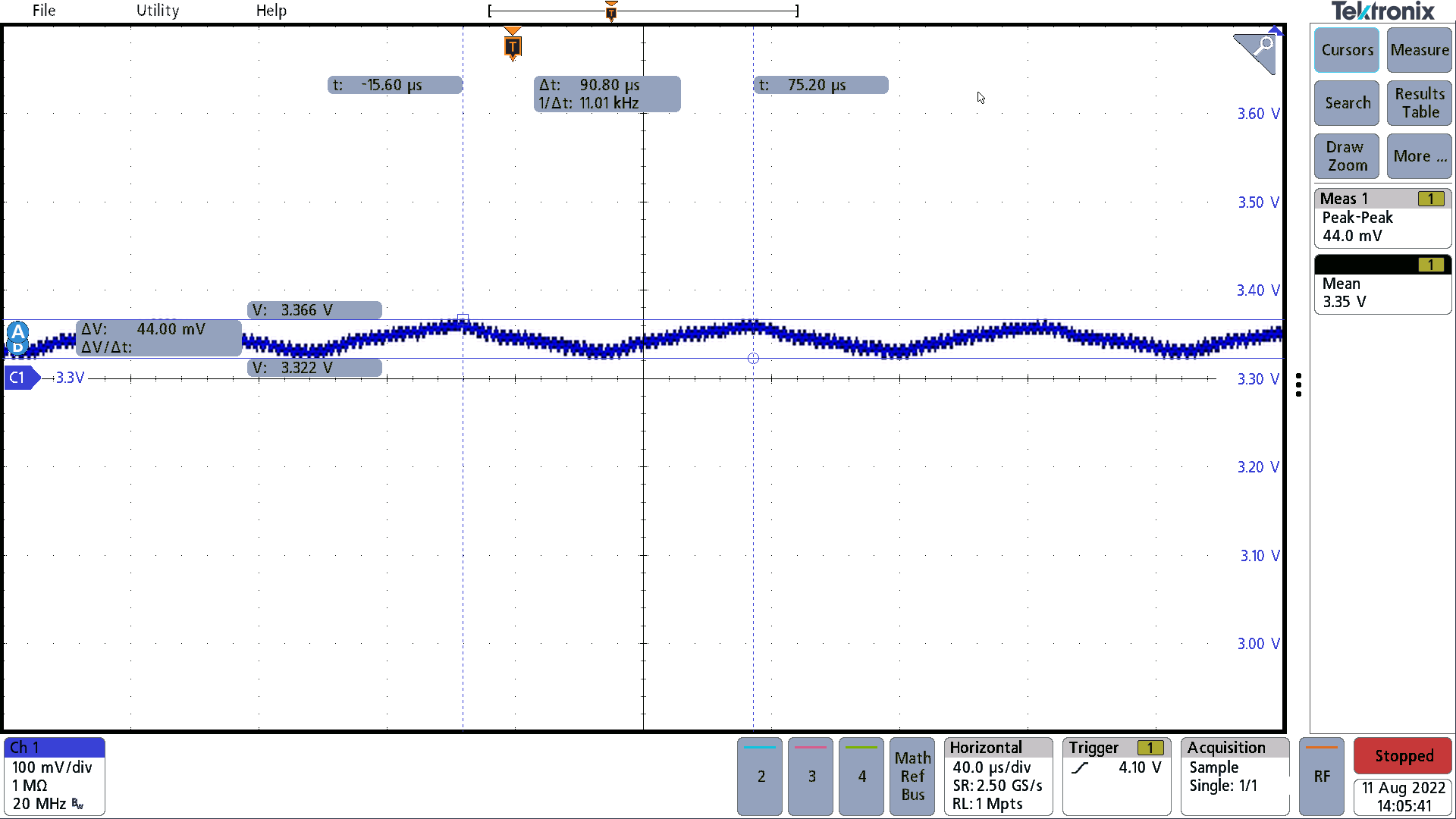TIDT279 October 2022
3.1 Output Voltage Ripple
Figure 3-1 through Figure 3-3 show the output voltage ripple waveforms with switching frequency dithering turned on. Ripple is from the 11-kHz dithering of the main 440-kHz switching frequency dominated the overall output ripple for all three outputs.

40 mV peak to peak
Figure 3-1 Output Voltage Ripple 3.3 V,
6.7 A off 14 VIN
40 mV peak to peak
Figure 3-2 Output Voltage Ripple 5 V, 120
mA off 14 VIN
150 mV peak to peak
Figure 3-3 Output Voltage Ripple 8 V, 600 mA off 14 VIN